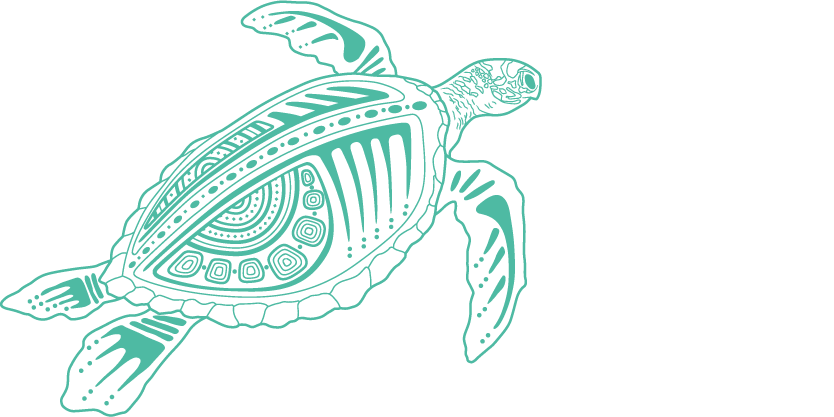55.
Grigg, R.W. 1995, Coral reefs in an urban embayment in Hawaii: a complex case history controlled by natural and anthropogenic stress, Coral Reefs 14: 253-266.
65.
Smithers, S. and Browne, N. 2022, Australia's reef islands, in Coral Reefs of Australia: Perspectives from Beyond the Water's Edge, eds S.M. Hamylton, P. Hutchings and O. Hoegh-Guldberg, CSIRO Publishing, Australia, pp. 130–134.
66.
Department of Environment and Science, 2019, Monitoring islands within the Reef 2050 Integrated Monitoring and Reporting Program: final report of the islands expert group, Great Barrier Reef Marine Park Authority, Townsville.
67.
Moro, D., Ball, D. and Bryant, S. 2018, Australian island arks: conservation, management and opportunities, CSIRO Publishing, Australia.
-
69.
McCormack, J.J. and Cotoras, D.D. 2021, Beetle diversity across micro-habitats on Lizard Island group (Great Barrier Reef, Australia), Zoological Studies 60: 12.
70.
Richardson, L.S., Fuller R.A., Stewart D.A., McDonald J.A., Robertson K., Oswald S.A. 2023, Saving our seabirds: Variable breeding success of Red-tailed Tropicbirds in the Great Barrier Reef reveals the need for robust monitoring, Emu - Austral Ornithology 123(4): 345-356.
71.
Neldner, V., Brushe, J., Kelly, A.L. and Richter, D. 2022, Vegetation communities of the Capricornia Cays, Queensland. Technical descriptions and benchmarks, Queensland Herbarium, Department of Environment and Science, Queensland Government, Brisbane.
72.
Great Barrier Reef Marine Park Authority and Queensland Government 2023, Reef Joint Field Management Program: Annual Report Summary 2022-23, Great Barrier Reef Marine Park Authority, Townsville.
73.
Pollock, A., Newton, M. and Addicott, E. 2019, Great Barrier Reef priority islands 1: 25,000 scale regional ecosystem mapping project–Mapping important Great Barrier Reef Islands within northern Queensland for National Park management, Queensland Government.
74.
Benkwitt, C.E., D’Angelo, C., Dunn, R.E., Gunn, R.L., Healing, S., et al. 2023, Seabirds boost coral reef resilience, Science Advances 9(49).
75.
Lambrides, A.B.J., McNiven, I.J., Aird, S.J., Lowe, K.A., Moss, P., et al. 2020, Changing use of Lizard Island over the past 4000 years and implications for understanding Indigenous offshore island use on the Great Barrier Reef, Queensland Archaeological Research 23: 43-109.
76.
Mandubarra Aboriginal Land and Sea Inc and Regional Advisory and Innovation Network (RAIN) Pty Ltd 2020, Mandubarra Sea Country cultural values: 2019-2020 mapping project, Mandubarra Aboriginal Land and Sea Inc.
77.
Bock, E., Hudson, L., Isaac, J., Vernes, T., Muir, B., et al. 2022, Safeguarding our sacred islands: Traditional Owner-led Sea Country governance, planning and management in Australia, Pacific Conservation Biology 28(4): 315-329.
78.
Great Barrier Reef Marine Park Authority 2021, Woppaburra Traditional Owner heritage assessment (Document No. 100428), Great Barrier Reef Marine Park Authority.
-
-
-
82.
Queensland Government 2022, Amendments to QPWS-managed areas, endorsed by Governor in Council on 10 November 2022—Subordinate Legislation 2022 No. 158, <https://www.desi.qld.gov.au/our-department/public-notices/previous/amendments-to-qpws-managed-areas-subordinate-legislation-no-158>.
-
-
85.
Department of Environment and Science 2020, Queensland’s Protected Area Strategy 2020 – 2030: Protecting our world-class natural and cultural values, Queensland Government, Brisbane.
-
-
88.
Wilson, S.P. and Verlis, K.M. 2017, The ugly face of tourism: Marine debris pollution linked to visitation in the southern Great Barrier Reef, Australia, Marine pollution bulletin 117(1): 239-246.
89.
State of Queensland (Department of Environment Science) 2023, Sentinel-2 Annual Fire Scar Series, State of Queensland.
90.
State of Queensland (Department of Environment and Science) 2023, Fire History - Queensland Parks and Wildlife Service.
-
92.
Department of Agriculture and Fisheries 2023, Yellow crazy ants Anoplolepis gracilipes Factsheet, Queensland Government, Queensland.
-
94.
Mycoo, M., Wairiu, M., Campbell, D., Duvat, V., Golbuu, Y. et al. 2022, Small Islands, in Climate Change 2022: Impacts, Adaptation and Vulnerability. Contribution of Working Group II to the Sixth Assessment Report of the Intergovernmental Panel on Climate Change, eds H.O. Pörtner, D.C. Roberts, M. Tignor, E.S. Poloczanska, K. Mintenbeck, et al., Cambridge University Press, Cambridge, UK and New York, USA, pp. 2043-2121.
95.
Saintilan, N., Horton, B., Törnqvist, T.E., Ashe, E.L., Khan, N.S., et al. 2023, Widespread retreat of coastal habitat is likely at warming levels above 1.5 °C, Nature 621(7977): 112-119.
96.
Kennedy, D.M. 2024, A review of the vulnerability of low-lying reef island landscapes to climate change and ways forward for sustainable management, Ocean & Coastal Management 249: 106984.
97.
Smithers, S.G., Harvey, N., Hopley, D. and Woodroffe, C.D. 2007, Vulnerability of geomorphological features in the Great Barrier Reef to climate change, in Climate Change and the Great Barrier Reef: a Vulnerability Assessment, eds J.E. Johnson and P.A. Marshall, Great Barrier Reef Marine Park Authority and Australian Greenhouse Office, Townsville, pp. 667-716.
98.
Kench, P., Beetham, E. and Masselink, G. 2020, Coral reef islands can accrete vertically in response to sea level rise, Science Advances 6(24).
99.
Geoscience Australia 2023, Digital Earth Australia Coastlines v2.1.0. Geoscience Australia, Canberra.
100.
Hamylton, S.M., McLean, R., Lowe, M. and Adnan, F.A.F. 2019, Ninety years of change on a low wooded island, Great Barrier Reef, Royal Society Open Science 6(6): 181314.



